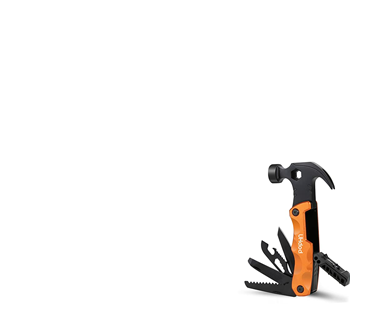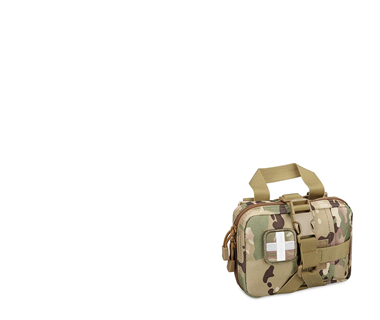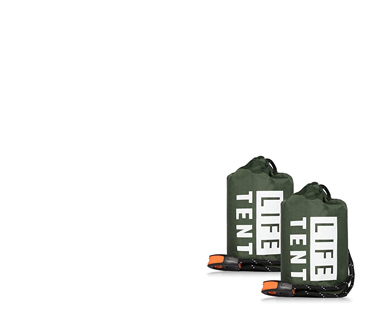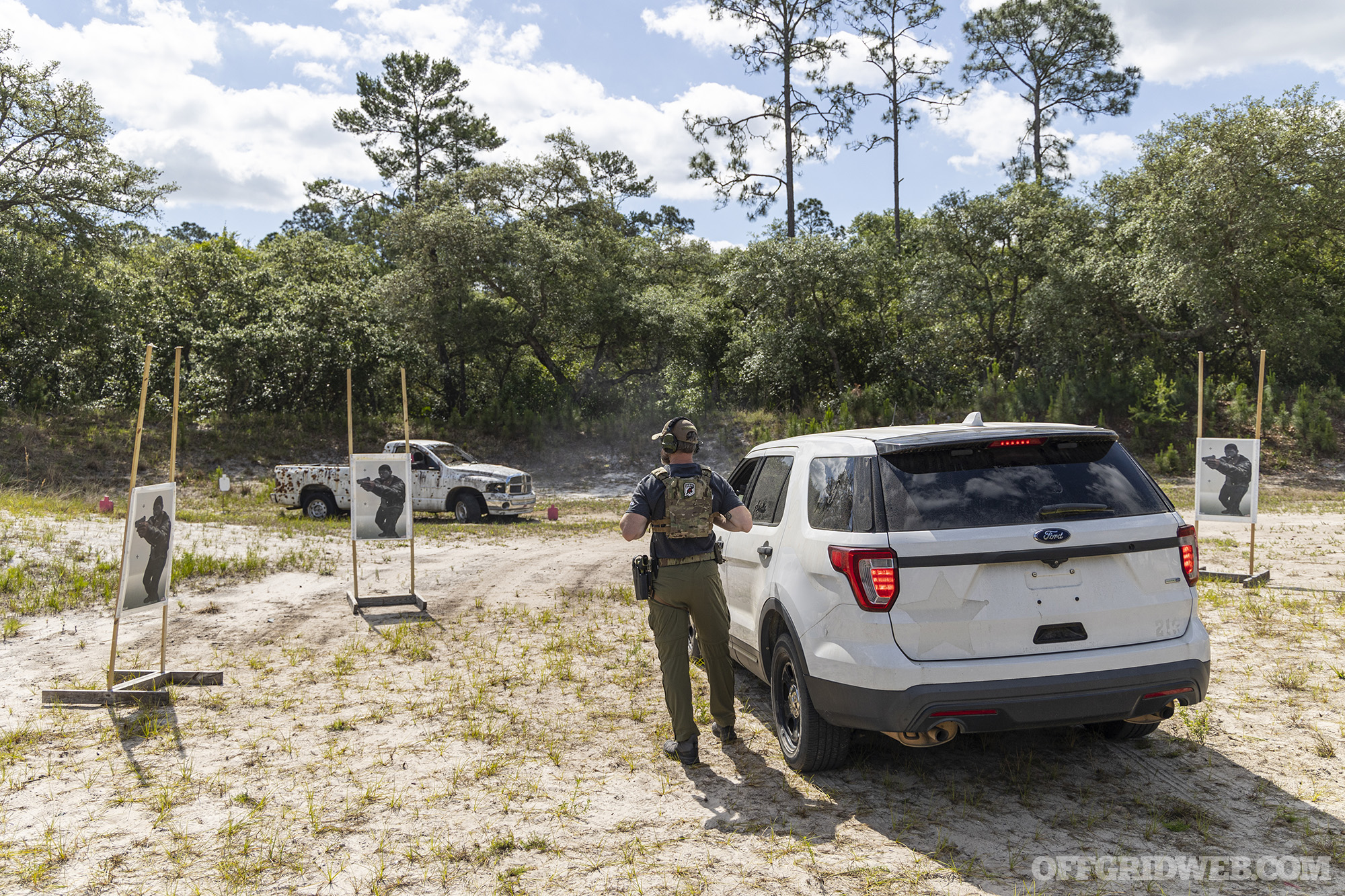Dynamic Shooting Skills with Safariland & Full Spectrum Warrior Leave a comment
Shoot, move, communicate — these three skills are critical to your success in any gunfight. Unfortunately, many modern firearms training programs only address shooting, encouraging students to build technical proficiency by standing on a flat range and punching holes in paper targets, month after month and year after year. Retired U.S. Navy SEAL Rich Graham set out to build a more well-rounded and realistic curriculum through his training company Full Spectrum Warrior. Rather than only three skills, the FSW program is based on twelve pillars which include health (diet, physical, and mental), movement and strength, communication and teamwork, situational awareness, work ethic and attitude, integrity, and of course, being dangerous enough to “be a victor, not a victim.” Recently, Safariland invited me to attend an intense two-day training event at the Full Spectrum Warrior ranch in central Florida. Read on for some lessons learned from this experience.
Arriving at Deep Woods Ranch
After flying into Orlando and driving about an hour north, I arrived at Deep Woods Ranch, a piece of private land owned and operated by Full Spectrum Warrior. The name is certainly fitting, since it’s surrounded by the Ocala National Forest and features a mixture of sandy terrain, dense forest, and open swampland. Graham has put in years of work to transform it into his ideal training playground, complete with dozens of steel targets, an obstacle course, various decommissioned military and police vehicles, a driving course, multiple climbing walls, conex boxes, elevated shooting platforms, and a CQB shoot house. Naturally, when Safariland wanted to gather some media personnel to try its latest holsters and gear, this was the perfect place to do it.
Each attendee loaded up with a loaner Walther PDP handgun, which was equipped with a direct-mount red dot from C&H Precision and a prototype of the new PL350C weaponlight from Modlite. For close-range drills, we used frangible 9mm from Federal; the rest of the time we shot Remington Range ammo.
We were also outfitted with Safariland Liberator HP 2.0 ear protection, a Bianchi nylon web belt, a Bianchi double mag pouch, and a light-bearing Safariland 6000-series holster with Level I retention. Speaking of which…
A Note About Retention Levels
Safariland says that one of the most common questions they receive from new holster buyers is “What’s the difference between retention levels 1, 2, and 3?” Let’s take a moment to clear that up.
A standard molded Kydex holster, such as those often used for competition and concealed carry, is not considered an active retention holster — friction is the only thing holding the gun in place. To enhance security, levels of active retention are added so that the weapon requires more deliberate actions before it detaches from the holster. Per Safariland’s definition, each level of active retention requires an additional hand movement before the user can remove the weapon.
Above: During his time as a sniper with SEAL Team 10, Graham learned that being a true warrior is about much more than shooting or simple combatives. This led to the development of Full Spectrum Warrior and its multi-disciplinary training program.
Level I is the Safariland ALS system, a thumb lever which must be pressed forward as the gun is drawn. The 6354RDSO holsters we used at this event were set up with ALS only (Level I).
Level II adds a secondary guard that must be disabled with two movements. For Safariland, this will be either the SLS strap alone or an ALS system with the optional ALS Guard add-on.
Level III requires three manual hand movements to release the weapon. Safariland’s popular ALS/SLS duty holsters are a good example of this level.
Obviously, each of these levels is a compromise between speed and security. A Level I holster makes it easier for the user to draw the weapon quickly, but also creates less barriers for a bad guy who might want to fight you for that weapon. Whether you’re a prepared citizen, competition shooter, cop, or member of the military, you should keep this delicate balance in mind as you choose a holster.
Hand-to-Hand Skills
Our first training exercise involved learning to defend against something anyone who open-carries a firearm should prepare for: a bad guy attempting to take your gun.
Thankfully, working with an active retention holster makes this task much less daunting. I was paired up face-to-face with a partner who was tasked with deactivating the Safariland ALS Level I retention on my holster. This is not an easy task, especially with the included ALS Hood Guard blocking access to the ALS release lever. Once I realized that the “bad guy” wasn’t going to be able to snatch my gun quickly, I developed enough confidence to focus on defending and counter-attacking rather than protecting the gun.
While old-school law enforcement training taught officers to pin the gun into the holster in the event of a hands-on fight, Graham encouraged us not to do this with our Safariland ALS holsters. Instead, I learned to use one forearm to deflect the hand that’s reaching for the gun, and the other forearm to redirect the bad guy’s head. As soon as my opponent couldn’t see me, it opened the door to move away or strike other weak points.
It’s also wise to use footwork to make the holster harder for an opponent to access. Rather than turning my dominant side towards my opponent, I rotated that side of my body away from the attacker to put the gun further out of reach as I defended myself. Above all, I made sure not to let my partner get behind me, as this would make it relatively easy for him to take my gun out of the holster, given that he knows how to operate its retention system. This may sound obvious, but it’s something you might not do in the heat of the moment unless you’ve practiced it.
Next, I learned what to do if my gun is already out of the holster when a physical fight takes place. A circular “hack” strike with the muzzle of the gun, similar to the motion of repeated overhand stabs with an icepick, can be used to disorient an assailant long enough to take a few steps back and shoot. I practiced this on a padded stick swung slowly towards me by my partner, using my peripheral vision as a cue to react.
The absolute worst-case scenario is when an opponent manages to get his hands on your gun while it’s drawn. With good situational awareness and spatial management, this shouldn’t happen, but Murphy’s Law still applies. In one simultaneous movement, strike the opponent’s forearms with your support hand forearm and violently pull the pistol back towards your body — this should be enough to break his grip. As a bonus, the front sight and slide serrations will cut into his hand if he attempts to hold on tight. I practiced each of these movements with a Umarex blue gun PDP replica, and learned how hard it can be to wrestle for control of a weapon.
Movement & Muzzle Discipline
“Always keep the muzzle pointed in a safe direction.” This is a safety rule we’ve all heard, but what constitutes “a safe direction” in a real-world setting like a crowded mall or multi-story office building with people above, below, and all around you? That’s a lot more complicated. You may need to keep the gun pointed up, down, in a very specific direction, or switch seamlessly between these positions. It’s not like a flat range, where you know you can always keep the gun aimed into the berm.
To practice these skills, I was given a Umarex paintball training pistol and instructed to shoot targets while walking through a crowd of other students milling around at random. Some walked slowly, while others ran or even bumped into me. Whenever someone approached my line of fire, I immediately diverted the gun to a safe direction. During this exercise, Graham occasionally shouted “Behind you!” to prompt a quick 180-degree turn and engagement of another target, all while maintaining continuous muzzle discipline.
This visually and mentally challenging exercise is one of the best ways I’ve seen an instructor teach muzzle awareness in a realistic setting.
CQB Techniques
The Full Spectrum Warrior facility has a plywood shoot house with a variety of rooms, corridors, and intersections, and we made good use of it to learn two-man close quarters battle (CQB) skills. Anyone who’s worked on CQB knows this is a skill set that can’t be mastered in a few short hours, so we worked on the most fundamental aspects. Students practiced leaning or hinging around corners to methodically “take bites” of the room while minimizing their own exposure, and learned the basic steps of entering closed rooms.
In general, for an inward-opening doorway…
The #1 man (a.k.a. point man) approaches the door from the hinge side, staying close to the wall.
The #2 man approaches from the opposite side, and waits for a “ready” nod from the #1 man to open the door.
#1 man keeps his muzzle up at the ready while #2 man quickly pushes open the door.
As the door swings out of the way, #1 man moves in, staying close to the inside wall and rapidly scanning the perimeter of the room.
#2 man enters immediately behind him, moving the opposite direction along the inside wall and scanning the other half of the room’s perimeter.
Once inside a room, students looked for — in order of priority — armed subjects, unarmed subjects, dead space (e.g. a couch or counter that creates a visual obstruction), open doors, and closed doors. To confirm successful clearance of a room, we communicated “clear left,” “clear right,” and eventually “all clear.” Each pair of students had the opportunity to work through the shoot house with Unit Solutions paintball carbines as well as the Walther-PDP-style Umarex pistols in our Safariland holsters.
Low-Light Shooting
At the end of the first day of training, students stayed after sunset to practice shooting with white light. I worked around VTAC barricades to shoot over, under, and through their various openings. The Modlite PL350C on my PDP cut through the darkness and gave me a clear view of the steel plates downrange.
Vehicle Combatives
Here’s another skill set many of us haven’t had an opportunity to practice. The FSW facility allowed me to get in some reps shooting out of and around vehicles, and also to practice evasive maneuvers while driving between shooting positions. Students worked in driver/passenger pairs, learning how to shoot through a side window or windshield. The latter tends to deflect outgoing rounds upwards due to its steep angle and laminated layers, but Graham also noted that this isn’t a guarantee — he says “bullets do crazy shit” sometimes after passing through objects.
Above: Most instructors yell “up” or “threat” to start a drill. Rich Graham started our drills by tossing a Pamax Tactical L.I.O.N. — an extremely loud diversionary device that some might compare to a flashbang grenade — into the back of our cruiser. That’s one heck of a wake-up call.
However, Graham explained that shooting out of your vehicle should be a last resort, because…
If you can drive away from the danger, drive!
If you can’t drive away, get out and move to cover!
If you can’t get out, only engage the threat for as long as it takes to buy enough time to do one of the above.
To escape a vehicle, I practiced unbuckling the seatbelt with my support hand and holding the door open by planting my outside foot near the hinge. Once a gun is drawn, the dominant hand’s job is good muzzle discipline; don’t use it for leverage against the steering wheel as you climb out of the seat. As I bailed out, I stayed as low as possible and kept my gun pointed in a safe direction (in this case, up).
Once you’re outside a vehicle, Graham recommends backing away from it at least 1-2 steps, since this provides more field of view and more room for incoming rounds to deflect as they pass through the sheetmetal or glass. Remember that vehicles don’t provide much hard cover — the engine block is the only part that’s likely to completely stop incoming rounds reliably — so you should take cover elsewhere if there’s a better alternative nearby.
For our final vehicle-based exercise, we paired up in squad cars and drove rapidly through an obstacle course that involved slaloms, reversing, shooting targets out the side windows, and eventually bailing out to cover each other as we retreated to safety. This ties in with the “tactical triad” mentioned in the introduction: shoot, move, communicate. Each partner had to shoot targets, be aware of the other’s movements, and communicate to maintain safety and provide continuous covering fire. For example, after I got into position outside the vehicle, my partner yelled “moving” and waited to hear my approving “move” command (or a disapproving “hold” command) before moving. Once he reached his next position, he shouted “set” to let me know he’d be able to cover me if I needed to move or reload.
The Obstacle Course
Speaking of movement, Rich Graham places a clear emphasis on physical strength and agility with his Full Spectrum Warrior curriculum, and it’s not hard to see why. The ability to move quickly without exhaustion or injury is essential in a combat environment, as well as in the contexts of law enforcement and civilian self defense. During the course, students tested ourselves by leaping over walls, crawling under barriers, sliding through pipes, and climbing up and down various platforms.
Shooting stations were present between each obstacle, and it became increasingly tough to get good hits as my heart rate elevated from the exertion. Elements such as monkey bars and gymnast-style parallel bars tested my upper body and grip strength, and I had to climb on top of a conex box to reach one of the shooting stations.
If your idea of strenuous physical activity is jogging between two positions at the range, you may be in for a rude awakening in a real-world gunfight. Pushing myself through the FSW obstacle course was difficult and humbling, but it left me excited to work harder on these important aspects of dynamic shooting in the future.
A Full Spectrum of Skills
After two days of intense training with Rich Graham and his FSW instructor cadre, the holsters and gear provided by Safariland held up to all the training with ease — not once did a student’s pistol go flying out of a holster, even while grappling, climbing over walls, clambering out of a vehicle, or somersaulting out of the drainage pipe on the obstacle course. The Walther PDP ran flawlessly with both the Federal frangible ammo and Remington ball ammo, and its C&H red dot kept shining brightly through the Florida sun. Most importantly, I walked away tired and bruised but satisfied in a way that few training experiences can provide. I could have happily spent several days drilling down into any one of the topics Graham covered, so I can’t wait to return to Deep Woods Ranch for another course in the future.
SOURCES
Safariland
Full Spectrum Warrior
C&H Precision
Walther
Modlite
Federal & Remington
The post Dynamic Shooting Skills with Safariland & Full Spectrum Warrior appeared first on RECOIL OFFGRID.




